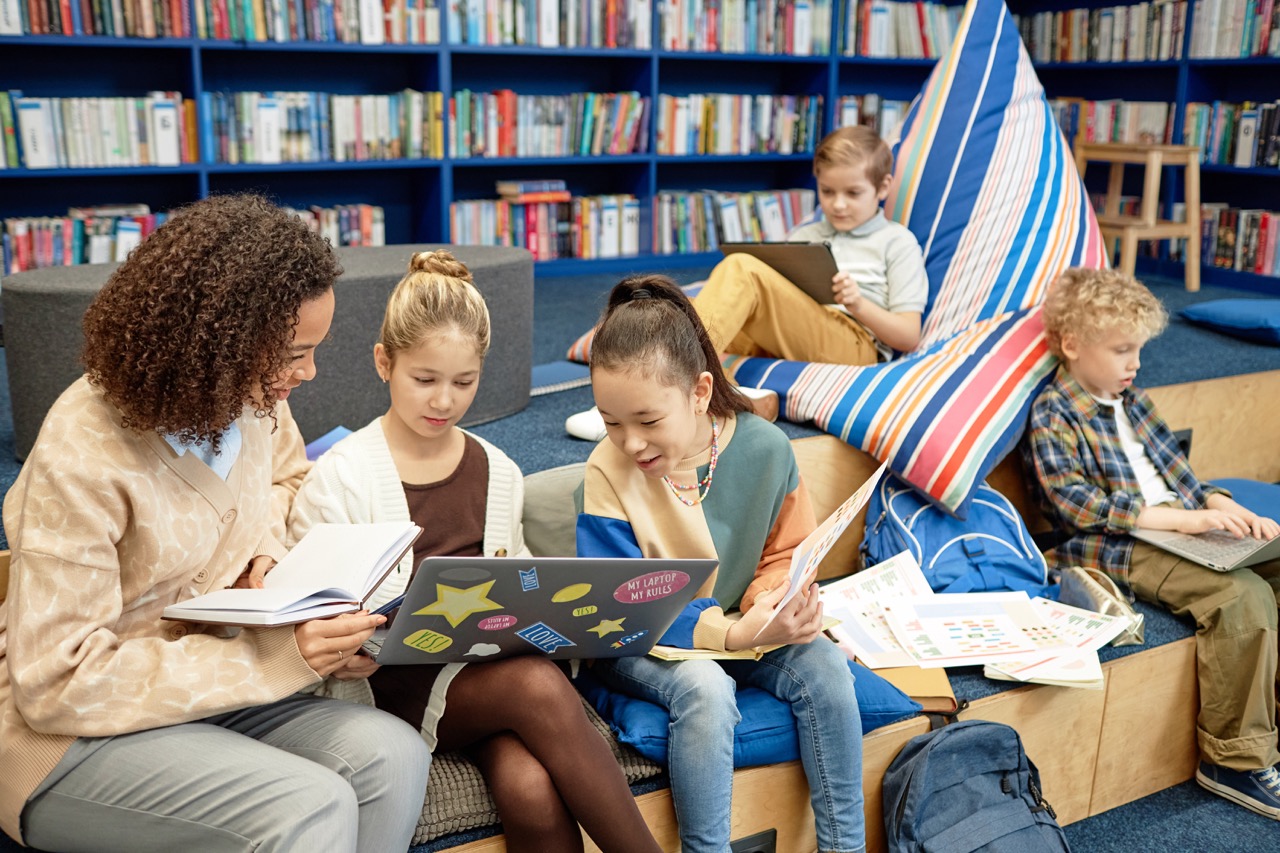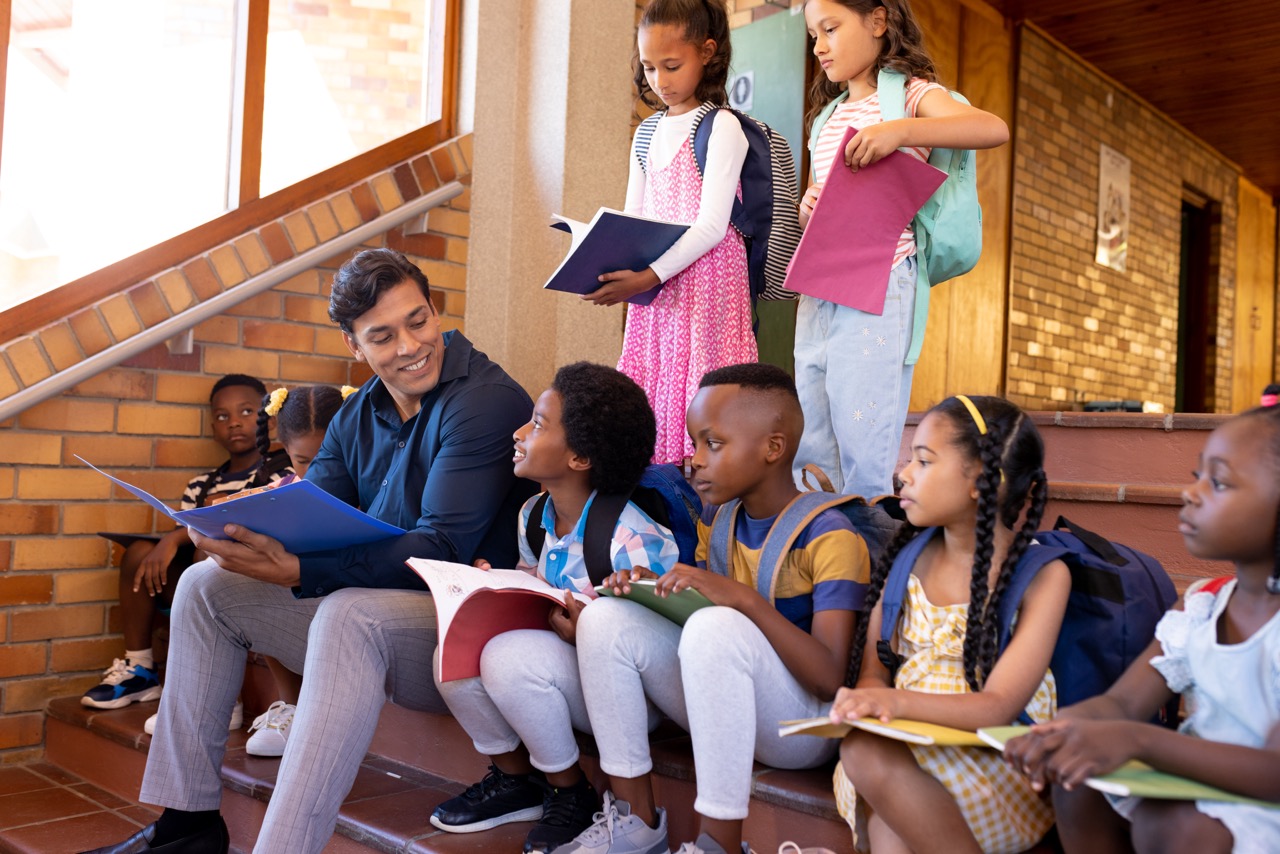In today’s dynamic educational landscape, the importance of children’s literature cannot be overstated. It serves not only as a gateway to literacy but also as a tool for social-emotional learning and creativity. By incorporating children’s books into the classroom, educators can foster a rich environment where students engage with stories in innovative ways. This article explores various creative strategies for utilizing children’s literature to enhance learning experiences, making the classroom a vibrant hub for imagination and collaboration.
Engaging Young Minds: The Power of Storytelling in Classrooms
Storytelling is a timeless practice that captivates audiences of all ages, and when applied in classrooms, it can unlock a world of imagination and critical thinking among young learners. Children’s books, with their vivid narratives and relatable characters, provide an excellent foundation for storytelling activities. Teachers can encourage students to share their interpretations of stories, enhancing their verbal skills and confidence. By inviting students to retell stories in their own words, educators can help them develop comprehension skills while also encouraging creativity.
Moreover, storytelling can be expanded beyond traditional reading sessions. Teachers can introduce storytelling circles, where students take turns adding to a story based on a given prompt or theme. This not only fosters a sense of community but also enhances collaborative storytelling. When children actively participate in the narrative construction, they learn to build on each other’s ideas and think critically about plot development, character arcs, and moral lessons. This holistic approach to storytelling cultivates an appreciation for narrative structure and encourages imaginative thinking.
Additionally, incorporating diverse storytelling techniques, such as using visual aids, puppetry, or multimedia presentations, can make the experience even more engaging. By integrating different modes of expression, educators can cater to various learning styles and keep students actively involved. Visual storytelling, for instance, allows children to convey emotions and themes through images, fostering deeper connections to the text. This multifaceted approach ensures that storytelling remains a dynamic part of the educational experience, igniting curiosity and passion for learning.
Transforming Texts: Creative Book-Based Activities for Kids
Once students are immersed in a particular text, creative activities can help solidify their understanding and encourage deeper engagement. One effective strategy is to have students create their own alternate endings or sequels to a story. This exercise not only stimulates imagination but also encourages critical thinking about character motivations and plot resolutions. By reflecting on the original text and exploring new possibilities, students develop their writing skills while gaining insights into narrative construction.
Another engaging activity is to transform a book into a script for a short play. Students can take on various roles, from actors to directors, allowing them to embody the characters and themes of the text. This hands-on approach promotes teamwork and communication while providing a platform for students to express their interpretations of the story. After performing, students can reflect on their experience, discussing what they learned about the characters and the story’s underlying messages.
Moreover, book-themed art projects can further enrich the learning experience. For instance, students can illustrate their favorite scenes or create dioramas that depict key events in the story. These activities allow children to explore their artistic talents while reinforcing their understanding of the plot and characters. By connecting literature with creative expression, educators can ignite a passion for reading that extends beyond the classroom.
Beyond Reading: How to Use Books for Interactive Learning
Children’s books can serve as a springboard for interactive learning experiences that go beyond just reading. For example, educators can design interactive discussions or debates based on the themes and moral dilemmas presented in the stories. By encouraging students to express their opinions and listen to others, teachers can foster critical thinking and communication skills. This approach reinforces the idea that literature is not just a solitary experience but a shared journey that can spark meaningful conversations.
Incorporating technology into book discussions can further enhance interaction. Educators can use online platforms to create virtual book clubs where students can share their thoughts and insights through video chats or discussion forums. This modern approach to literature allows students to connect with peers beyond their classroom and even internationally, gaining diverse perspectives on the same text. Technology thus broadens the horizons of literary discussions, making them more inclusive and enriching.
Additionally, experiential learning can be integrated into the exploration of children’s books. For instance, after reading a book about different cultures, students can engage in a cultural day where they experience foods, music, and customs from the story’s setting. This hands-on approach creates lasting memories and deepens understanding by placing students directly in the context of the narrative. By bridging the gap between text and real-world experience, educators can create a rich tapestry of learning that resonates with young minds.
Crafting Connections: Incorporating Art with Children’s Literature
Art and literature are intrinsically linked, and incorporating artistic expression into the study of children’s books can significantly enhance students’ educational experience. Visual art projects, such as drawing or painting scenes from a favorite book, allow students to interpret narratives through their unique lens. This form of self-expression not only solidifies comprehension of the story but also nurtures creativity and critical thinking.
In addition to drawing, collage-making can also serve as a powerful tool for connecting art with literature. Students can cut out images and words from magazines to create a visual representation of a character or theme from a book. This tactile activity encourages students to think critically about the elements of the story and how they can be represented visually. By engaging with the text in a multi-dimensional way, students are more likely to internalize its messages and themes.
Furthermore, integrating performance art, such as dance or drama, into literature studies can transform traditional reading sessions into immersive experiences. Students can choreograph dances that reflect the emotional journey of a story or perform readers’ theater, bringing characters to life through dialogue and movement. These artistic explorations foster connections between literature and individual expression, enhancing students’ engagement and understanding of narrative depth.
Building Empathy: Discussing Themes in Children’s Books
Children’s books often tackle complex themes such as friendship, diversity, and resilience, making them ideal tools for discussions about empathy and social issues. Educators can guide students in exploring these themes through guided discussions, allowing them to share their thoughts and feelings about the narratives. This reflective process promotes a deeper understanding of the characters’ journeys and the societal issues they may face, helping students develop a more empathetic worldview.
Incorporating role-playing activities can further enhance discussions on empathy. After reading a story, students can step into the shoes of different characters to explore their perspectives and motivations. This immersive experience encourages children to consider various viewpoints and understand the emotional and social implications of the storylines. By fostering a safe environment for such exploration, educators can help students develop compassion and a sense of responsibility towards others.
Additionally, creating a “book of feelings” can be an effective way to connect literature with emotional intelligence. Students can document their feelings in response to characters’ experiences or significant events in the stories they read. This practice not only helps them articulate their emotions but also promotes self-awareness and empathy. Through these discussions and activities, children can gain valuable insights into the human experience, empowering them to navigate their social environments with sensitivity and understanding.
Fostering Collaboration: Group Projects Inspired by Stories
Collaboration is a vital skill in today’s world, and children’s literature provides an excellent foundation for collaborative projects. Group storytelling projects, where students work together to create a story inspired by a book they have read, can be both fun and educational. This activity encourages teamwork, communication, and creativity, as each student contributes their ideas and perspectives to the narrative. By collaborating on storytelling, children learn to listen to one another and build on each other’s ideas, fostering a sense of community.
Another effective collaborative project involves creating a class book. After reading several stories, students can contribute their illustrations, poems, or short narratives to compile a collective book that reflects their interpretations and themes. This project not only promotes creativity but also reinforces the idea of shared ownership and pride in their work. When the book is published or displayed in the classroom, students can celebrate their collective achievement, fostering a sense of belonging and collaboration.
Moreover, organizing thematic group presentations can further enhance collaborative skills. Students can work in teams to research and present on themes found across multiple children’s books, discussing how different authors approach similar subjects. This project not only develops research and presentation skills but also encourages critical thinking as students analyze and compare various texts. By weaving together literature and collaboration, educators can create a supportive and dynamic classroom environment.
Incorporating children’s books into the classroom opens up a myriad of opportunities for imaginative learning and personal growth. By utilizing creative activities, interactive discussions, and collaborative projects, educators can transform the reading experience into a holistic journey that engages young minds on multiple levels. As children explore literature’s themes and narratives, they develop essential skills that will serve them well beyond the classroom. Ultimately, fostering a love for reading through innovative strategies will empower students to become thoughtful, empathetic, and creative individuals in an ever-evolving world.










